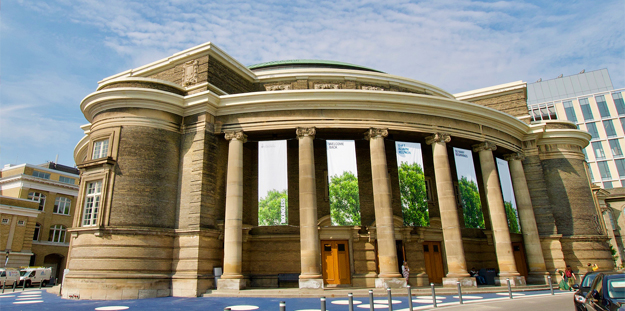Since 2010, U of T has seen a 146 per cent increase in accommodated test bookings – from quizzes to tests and final exams. To deal with the growing demand and success of the program, Accommodated Testing Services (ATS) is creating a new streamlined process for students, instructors and staff.
Starting in March 2019, ATS and Enterprise Applications & Solutions Integration (EASI) began designing a system to ease instructors’ and administrative work loads and support students on their academic journey – creating an efficient process from beginning to end.
“The existing processes and technology supporting accommodated tests were implemented in 2010 when we received less than 9,000 accommodation requests per year. Today, we receive nearly 22,000 requests per year with a steady increase each year,” says Steven Bailey, director of Academic and Campus Events. “We’re moving from an outdated, email-based process to a system that will help us deal with the complexities of coordinating tens of thousands of unique bookings.”
ATS is responsible for coordinating quiz, term test, and final exam accommodations for students with documented disabilities who are registered with Accessibility Services on the St. George Campus. Working cooperatively with Accessibility Services and the institution’s faculty and staff, ATS plays a vital role in U of T’s commitment to accessibility.
Users will find the new process transparent, seamless and intuitive, providing easy online access to information through pre-existing U of T platforms.
“Students will be able to easily log in to ACORN to create bookings with a modern, user-friendly interface,” says Mark Johnston, a product manager with EASI. “The Course Information System will replace an email-based system for instructors and will provide secure online submission and storage of test details and documents. ATS staff will also use a newly designed application to coordinate and manage all requests.”
In addition to the new platform, ATS changed its name from Test and Exam Services in January 2020.
“We’re refocusing our service on the people rather than the process and figuring out what instructors, students and staff need while aligning our goals around a common purpose,” says Bailey. “Having that word ‘accommodated’ is a multi-dimensional word – accommodating community needs about academic integrity, efficient work, efficient use of technology and process flow.”
And accommodating different users during the pandemic has been a central focus for ATS.
“The pandemic is a perfect case in point for why we need to create an infrastructure that is agile enough and is able to pivot as new things emerge,” says Bailey. “New technology around accommodation, new approaches, new assessment and all of the work we’re doing is laying the foundation for us to incorporate this in the future.”
This project is part of the Next Generation Student Information Services (NGSIS) Program, which creates and deploys technological solutions that help students fully engage in rewarding learning experiences and achieve academic and personal success. It also helps to provide faculty and staff with a rich and supportive educational environment.
The evolution of this process has involved close consultations with a cross section of students, instructors, staff and senior leadership.
To date, the instructor module has been piloted with the Faculty of Pharmacy, Faculty of Law, Faculty of Kinesiology and Physical Education and the Faculty of Arts & Science. Following these pilots, the project team plans to roll out the new online modules to all students and instructors on the St. George campus, and the new administrative system to ATS staff this summer. In the future, the platform could be extended to all three campuses.
“Our goal is to ensure that all U of T students have equal opportunity to write tests and exams,” says Bailey. “With the new platform, ATS will be well positioned to provide excellent service to students and their instructors. They’ll have modern tools and technology at their fingertips to anticipate and respond to any challenges that come their way.”



